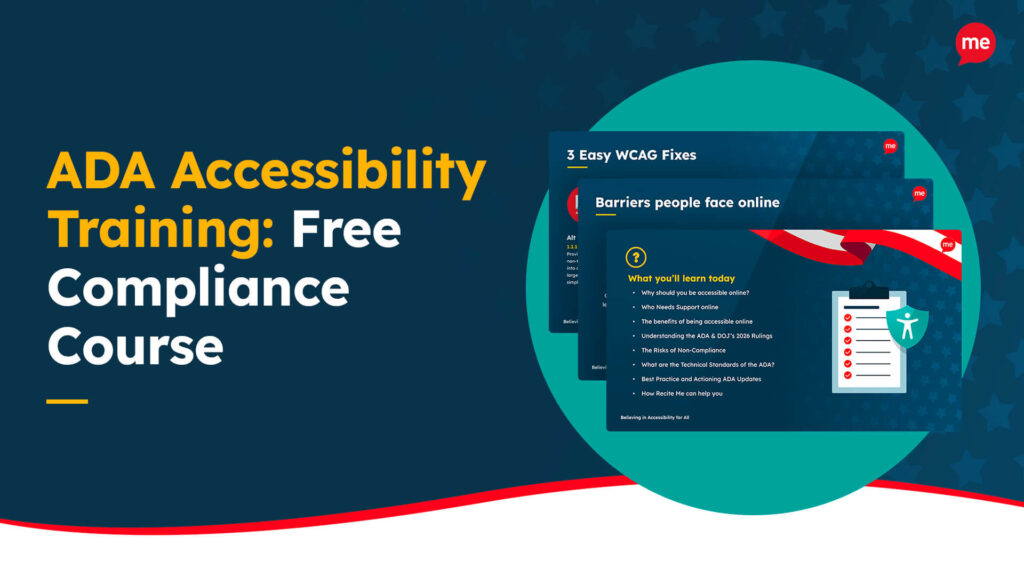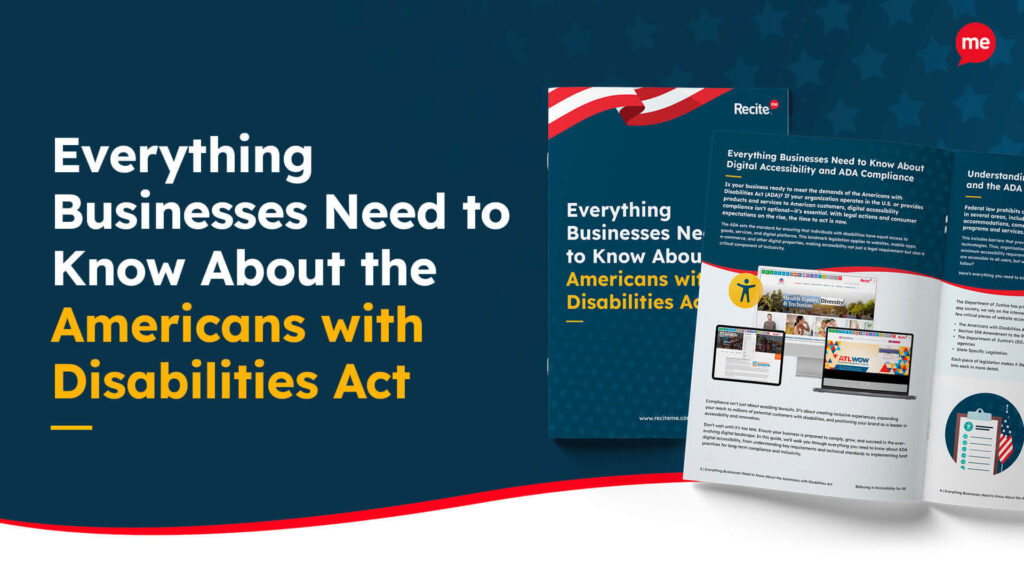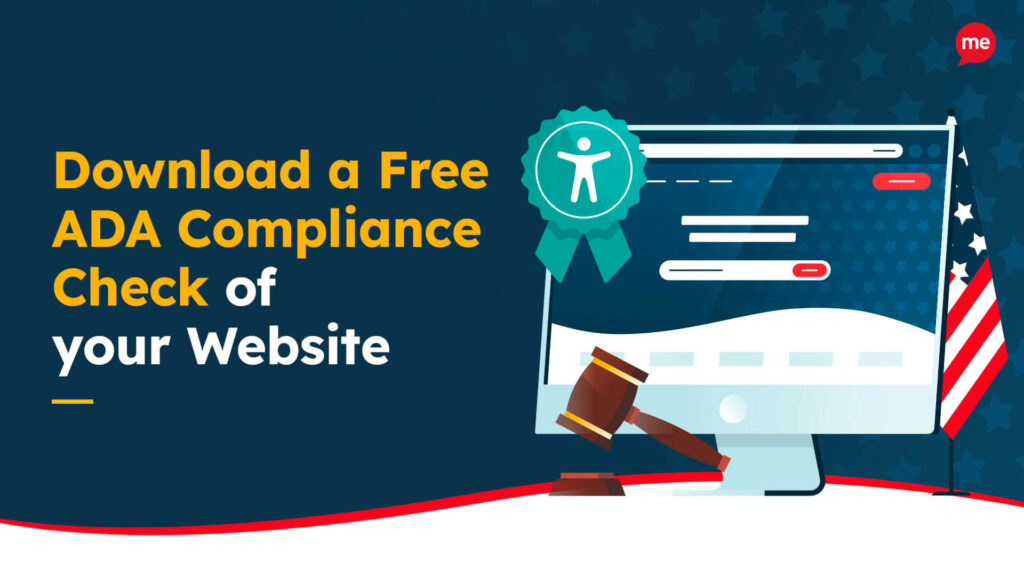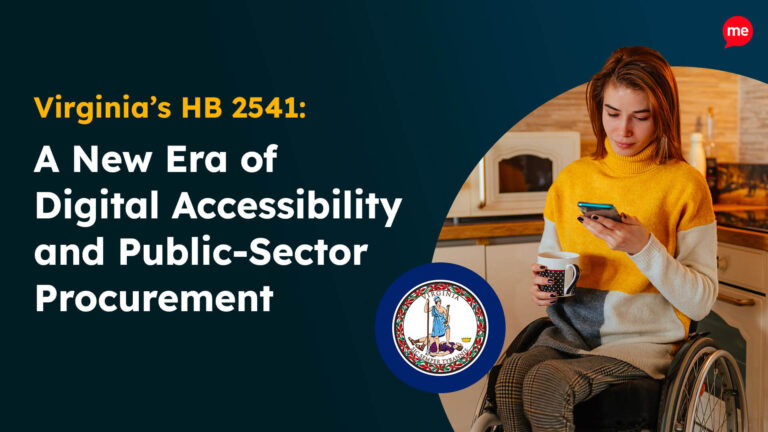Get A Free ADA Compliance Audit Of Your Website
Download NowThe Americans with Disabilities Act is a federal law that protects people with disabilities from discrimination in everyday life. It makes sure that everyone has equal access to things like jobs, government services, online and physical stores, restaurants, and more.
Whether you run a small business, work for a government agency, or lead a non-profit, it’s important to know how the ADA affects you. Although the ADA covers most businesses, there are some important exceptions you should know about. Let’s break these down so you can understand what your responsibilities are and make sure you’re following the law.
Understanding the Americans with Disabilities Act
The Americans with Disabilities Act (ADA) was passed in 1990 to protect the rights of people with disabilities. It’s divided into five titles, each addressing different aspects of public life.
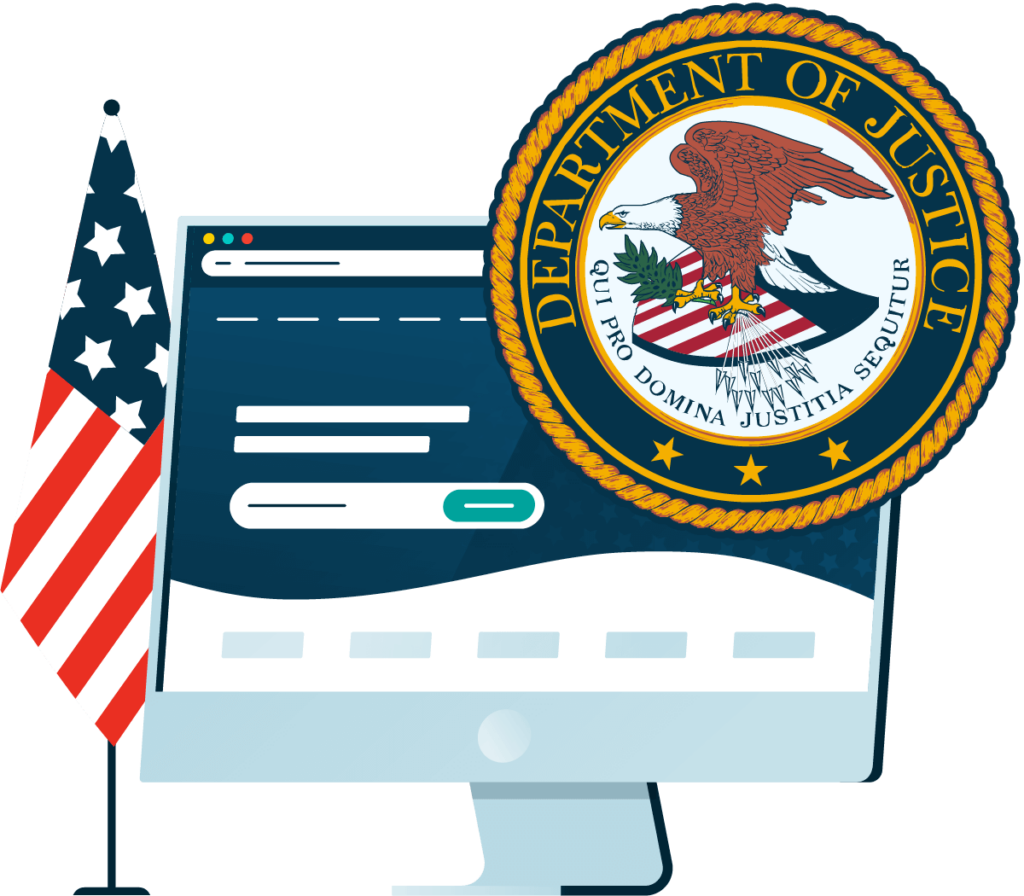
Here’s how the five ADA titles work:
- Title I: Covers employment practices of private employers, state and local governments, employment agencies, and labor unions.
- Title II: Covers programs and activities of state and local governments.
- Title III: Applies to businesses and places open to the public.
- Title IV: Deals with access to telecommunications services.
- Title V: Miscellaneous provisions, including anti-retaliation measures.
Understanding which title applies to your operations is the first step in ensuring ADA compliance for your business. For most organizations, Titles I, II and III are the most important to know about.
Want to make sure your website is compliant with the Americans with Disabilities Act? Then unlock the ADA compliance checklist now. Discover actionable steps to ensure ADA compliance, helping you avoid lawsuits and any other negative consequences of non-compliance.
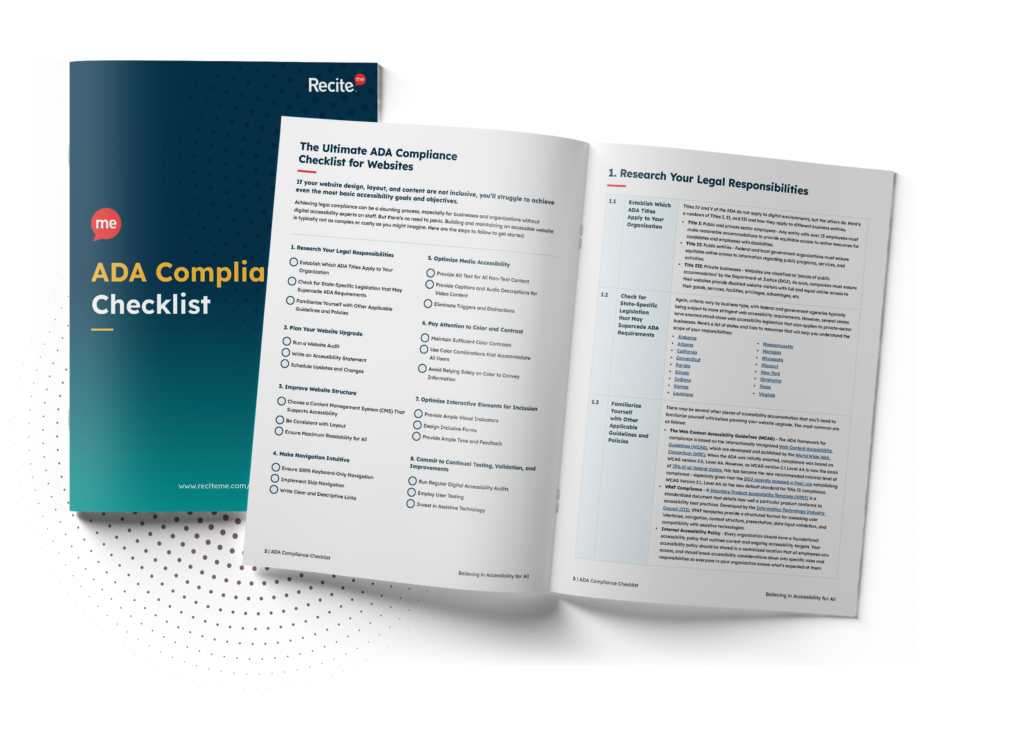
ADA Title I Exemptions: Employment Provisions
Title I of the ADA protects qualified individuals with disabilities from discrimination in employment. But there are a few cases where businesses may be exempt from these requirements:

Small Business Exemption
If your business employs fewer than 15 employees, you’re generally exempt from Title I requirements. This means you’re not legally obligated under the ADA to provide reasonable accommodations or adhere to other employment-related provisions. However, it’s essential to note that state or local laws might impose stricter standards, so always check your local regulations.
Employee Work Area Exemptions
When it comes to making your business accessible under the ADA, you might be wondering how the rules apply to employee work areas. This is a topic that can be confusing, so let’s break it down.
Employee work areas don’t have to meet every single accessibility guideline that applies to public spaces, but they aren’t completely exempt from ADA.
The ADA recognizes that certain employee work areas might not be fully accessible. However, employers are still required to ensure that employees with disabilities can:
- Approach the workspace.
- Enter the workspace.
- Exit the workspace

This means that the entire workspace doesn’t need to be fully accessible, but it should be navigable for employees with disabilities.
It’s important to remember that these exemptions apply only to employee work areas, not to employee-only areas. Those areas must still be fully accessible.

Here is the difference:
- Employee Work Area: Is any space where an employee actually performs work, like an office desk, a workbench, or a cashier’s station.
- Employee-Only Area: All common spaces like hallways, bathrooms, break rooms, or kitchens that are used only by employees.
Just because a space is off-limits to the public doesn’t mean it’s considered a work area. What really matters is whether employees are doing their work in that space.
Additional Title I Considerations
- Independent Contractors are not considered “employees” under federal labor law, The ADA’s employment provisions typically don’t apply to independent contractors.
- Tribal governments are specifically excluded as an employer. However this does not extend to private employers on reservations, who still must follow Title I requirements.
ADA Title II Exemptions: Government Entities
Title II of the ADA ensures that people with disabilities have equal access to services, programs, and activities offered by state and local governments. Unlike Title I, there are no general exemptions under Title II. That means all state and local government agencies, no matter how big or small, must follow these rules and make their programs accessible to people with disabilities.
Section 504 of the Rehabilitation Act
While Title II applies to state and local governments, federal agencies and any program or activity that gets federal funding must follow another law called Section 504 of the Rehabilitation Act. This law also prohibits discrimination against people with disabilities. So if you receive any type of federal financial assistance, like grants or contracts, please refer to Section 504 to make sure your programs and services comply.

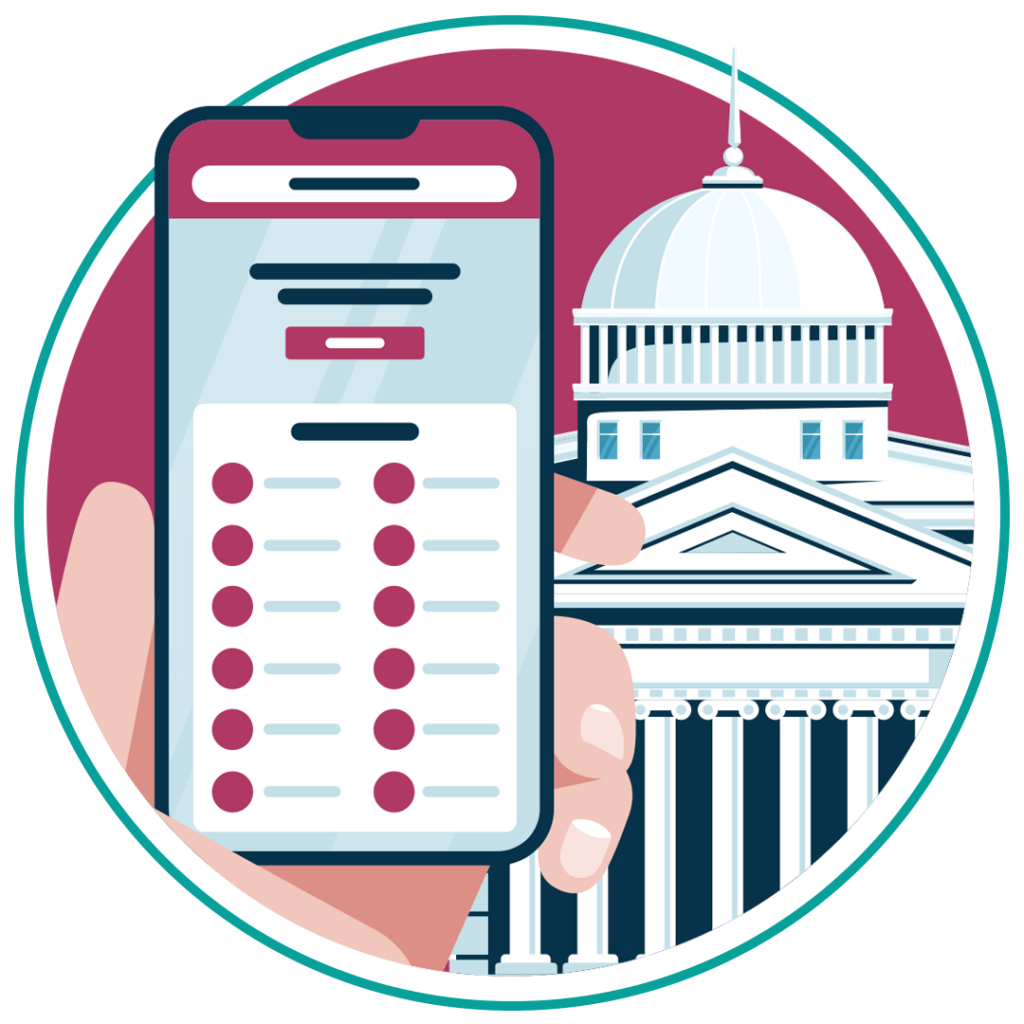
Tribal Governments
Tribal governments are not specifically mentioned, but employment and law experts agree that Title II probably doesn’t apply to Tribal entities. However, there may be obligations under other federal laws, so it’s essential to consult specific regulations applicable to Tribal governments.
Public entities must act now
The US Department of Justice has announced new ADA Title II compliance deadlines:
- April 24, 2026 – Public entities serving more than 50,000 people must achieve ADA compliance.
- April 26, 2027 – Public entities serving fewer than 50,000 people must achieve ADA compliance.
This highlights the urgency for public entities in the United States. Failure to comply by the deadlines could result in lawsuits, fines, penalties, and costly remediation efforts.
ADA Title III Exemptions: Public Accommodations & Commercial Facilities
Title III of the ADA requires most private businesses that serve the public to make sure their buildings and services are accessible to people with disabilities. But there are a few types of organizations that are exempt from these requirements:
Religious Organizations & Their Facilities
If you run a religious organization (like a church, mosque, synagogue) or a building controlled by a religious group, then your facilities are generally exempt from Title III. This exemption still applies even if your building is open to the public or if you offer services like schools or daycare centers on your property.

Private Clubs
Private membership clubs are typically social or recreational organizations with specific membership requirements, that are governed by their members, and offer facilities and activities that are open only to members and their guests.

If you operate a private membership club then you do not have to comply with Title III. But keep in mind, you can lose this exemption if you open your facilities to the general public, such as for a fundraiser or recruiting event.
For occasional public events, only temporary accessibility measures (like a ramp) might be required. But if these events happen frequently, your club may need to make permanent accessibility changes, like installing a permanent ramp.
Historic Buildings
If your business or organization is located in a historic building, you’re still required to follow the ADA as much as possible. However, the law recognizes that making every single change required for full accessibility could damage the historic features that make the building unique.
Basically, you’re expected to make things accessible to the greatest extent possible. But you don’t have to go so far that it would destroy or threaten the building’s historic character.
For example, some historic buildings might have doorways or hallways that are too narrow to meet modern ADA standards. It might not be practical or safe to widen them without harming the building’s historical significance.
That said, you should still look for other ways to make the building accessible. For example:
- Adding a wheelchair-accessible ramp to the entrance.
- Creating accessible parking spaces nearby for visitors with disabilities.
- Providing accessible restrooms if possible.

Air Transport
Airlines and air transportation are covered by a different law called the Air Carrier Access Act (ACAA). This means the rules for accessibility on airplanes are set by the ACAA, not the ADA.
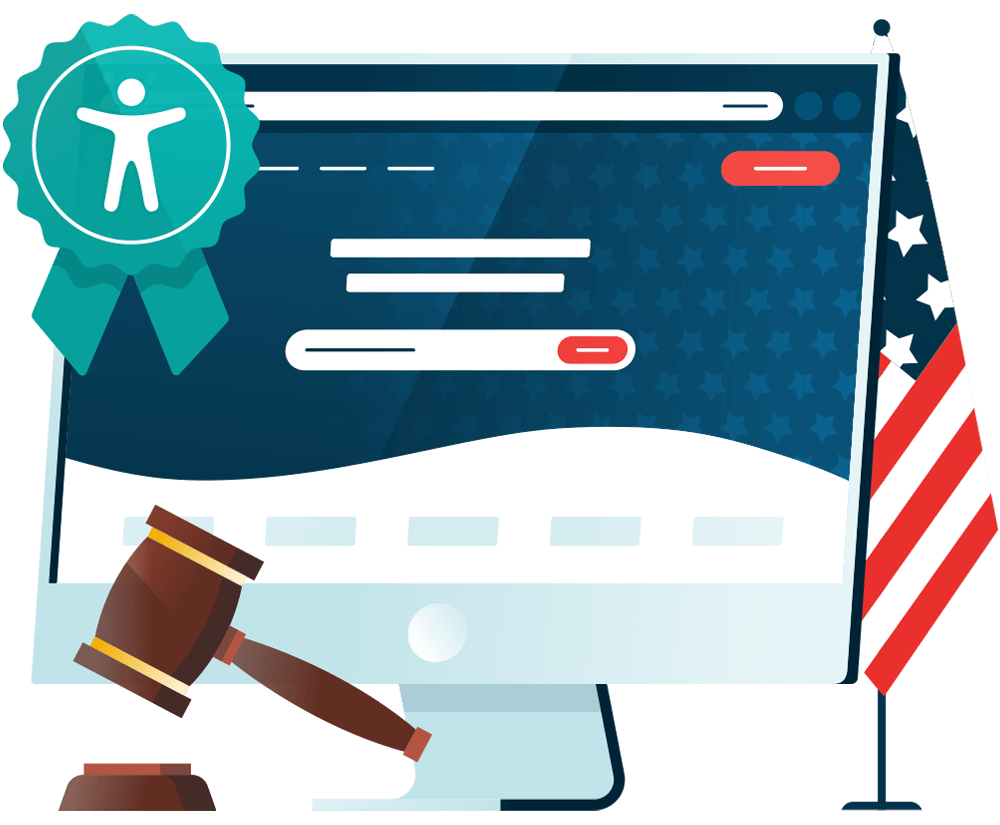
Digital Accessibility: Are websites exempt from the ADA?
Ensuring your website is accessible is just as crucial as physical accessibility. The Department of Justice (DOJ) has consistently held that websites of businesses open to the public are considered “places of public accommodation” under Title III.
There are no explicit exemptions for websites under ADA. So if you are a small business you must ensure your website is accessible to customers, regardless of your employee count.
Non-compliance can lead to lawsuits, financial penalties, and reputational damage. So it’s essential to ensure that your website adheres to recognized accessibility standards, such as the Web Content Accessibility Guidelines (WCAG).
Get a free automated ADA compliance audit of your website. This audit will highlight compliance violations and provide the recommendations needed to meet ADA compliance standards.
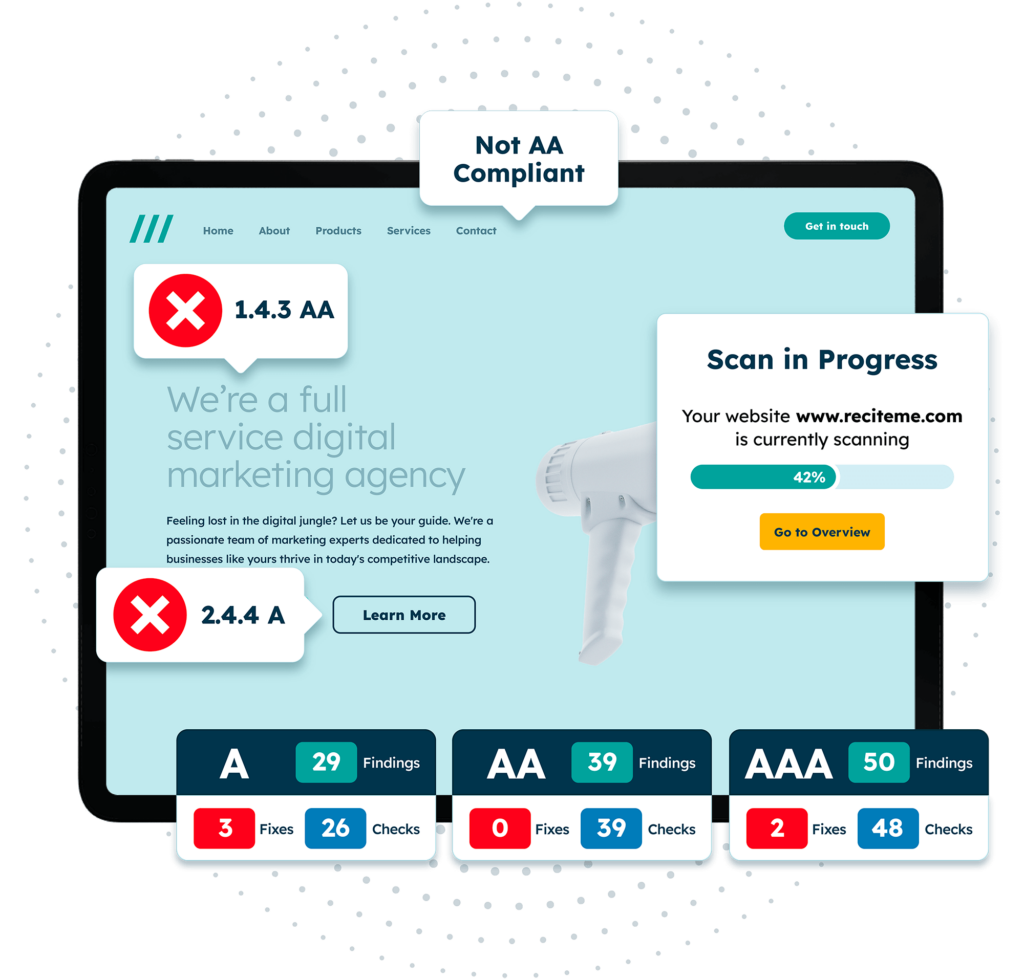
What to do if your business is not exempt from the Americans with Disabilities Act?
If your business doesn’t qualify for any exemptions, here’s how you can ensure ADA compliance:
Conduct an ADA compliance audit of your website
Start by taking a close look at your website’s accessibility with an ADA accessibility audit. Many people with disabilities rely on assistive technologies, like screen readers or voice commands, to navigate online content. Use online accessibility tools like an accessibility checker to scan your website for potential barriers, like missing alternative text for images, poor color contrast, or unlabeled forms. You could also consider hiring an accessibility expert or consultant who can perform a detailed audit and provide a roadmap for improvement.
Implement digital and physical accessibility changes
Once you know where your accessibility barriers are, it’s time to fix them. Update your website to follow recognized accessibility standards like WCAG. This might include adding keyboard navigation, ensuring captions for videos, and making sure that all interactive elements can be used without a mouse.
Don’t forget your physical spaces like entrances, restrooms, and parking. Evaluate them using the ADA Standards for Accessible Design and make necessary upgrades (e.g. installing ramps, widening doorways, adding accessible signage).
Regularly audit the accessibility of your website at intervals
As you add new content, update products, or tweak features, new accessibility issues can pop up, sometimes without you even realizing it. That’s why it’s so important to regularly monitor the accessibility of your website to make sure it remains accessible to everyone, including people with disabilities.
A good rule of thumb is to schedule an accessibility audit at least once a year, though every few months is even better, especially if your website is growing or changing quickly. Use the same tools or accessibility experts you relied on during your initial audit to maintain consistency. Remember, accessibility isn’t a one-time fix, it’s an ongoing commitment that helps you avoid problems down the road while ensuring that all visitors can access your content easily.

Train your employees on ADA accessibility best practices
Making your business accessible isn’t just about updating your website or physical space, it’s also about how your team supports customers, including those with disabilities. Providing ADA accessibility training for your employees helps them understand why accessibility matters online and teaches them how to create and maintain content that everyone can use.

Train your staff on ADA basics, like how to design accessible websites, write clear and easy-to-understand content, and use tools like alt text for images or captions for videos. Also, help them learn how to assist customers who rely on screen readers, keyboard navigation, or other assistive technologies.
By investing in training, you’ll create a culture of inclusivity where every visitor, whether online or in person, feels welcome and respected.
What are the risks for organizations not compliant with the ADA
If you’re required to comply with the Americans with Disabilities Act, but fail to do so, you’ll be at risk of facing several negative consequences. Here are some of the most significant risks:
Lawsuits
One of the biggest risks you face is legal action. Individuals who experience discrimination or accessibility barriers can file ADA lawsuits against your business. These lawsuits can be time-consuming and expensive to resolve, even if you ultimately settle out of court. Legal fees, court costs, and potential damages can quickly add up and put a strain on your resources.
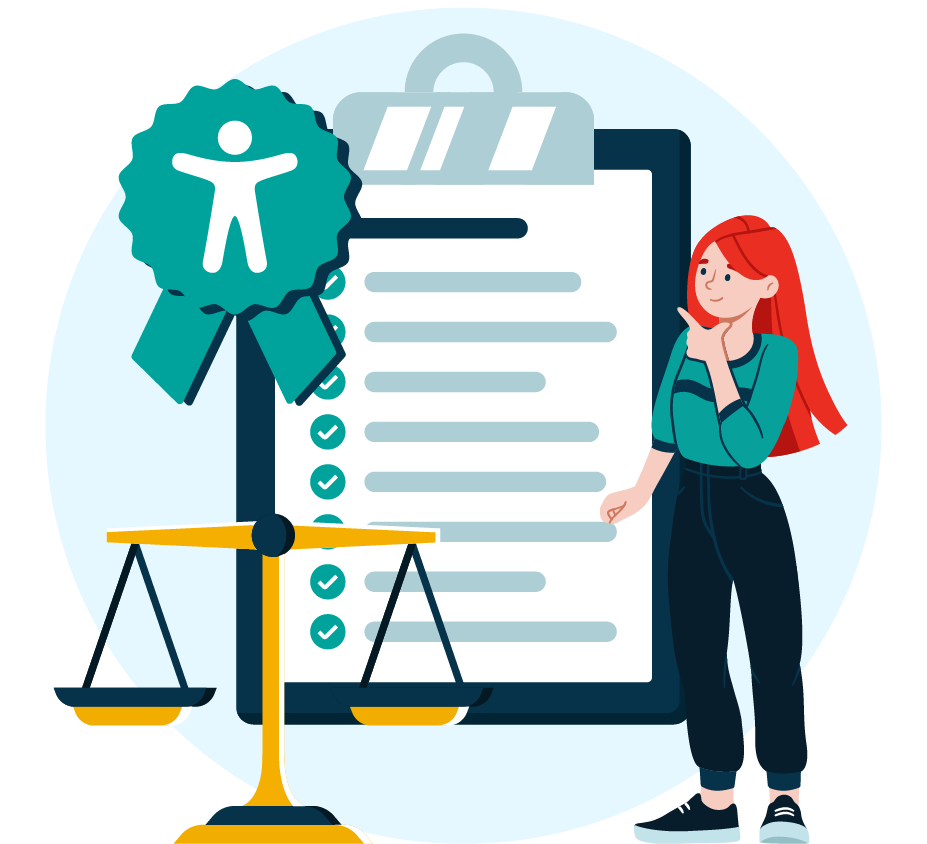

Reputation Damage
Non-compliance doesn’t just hurt financially, it can also harm your brand. Word spreads quickly, especially with social media. Negative reviews, bad press, and community backlash can damage your reputation and drive customers away. People today are increasingly looking to support businesses that are inclusive and accessible. Non-compliance sends the opposite message, making you look out of touch or even discriminatory.
Fines
In addition to lawsuits, the Department of Justice (DOJ) can impose civil penalties for ADA violations. For Title III (public accommodations), the DOJ can fine up to $75,000 for a first violation and $150,000 for each subsequent violation. These fines are separate from any damages you might have to pay to private plaintiffs. They’re meant to encourage compliance, and they can seriously hurt your bottom line.
Want to make sure your website is compliant with the Americans with Disabilities Act? Then unlock the ADA compliance checklist now. Discover actionable steps to ensure ADA compliance, helping you avoid lawsuits and any other negative consequences of non-compliance.

Final verdict: Avoid the risks and become ADA complaint today
Don’t wait for a complaint or lawsuit to motivate you. Take action now to evaluate your facilities, update your website, and train your team on web accessibility best practices. Proactive steps today will help you avoid risks, protect your reputation, and show your commitment to equal access for all. Ensuring that your business is ADA compliant is a chance to build a more inclusive and welcoming environment for everyone.
Need more help becoming ADA compliant?
The following resources are packed full of actionable tips and expert advice for making your digital content compliant with the Americans with Disabilities Act:
Free ADA Accessibility Training
Take the first step to ADA compliance by completing our training course.
Free ADA Accessibility Guide
Ensure your organization is meeting the requirements for ADA compliance.

